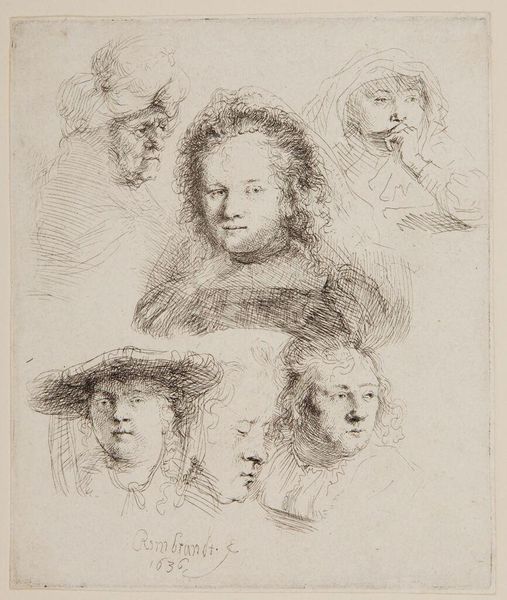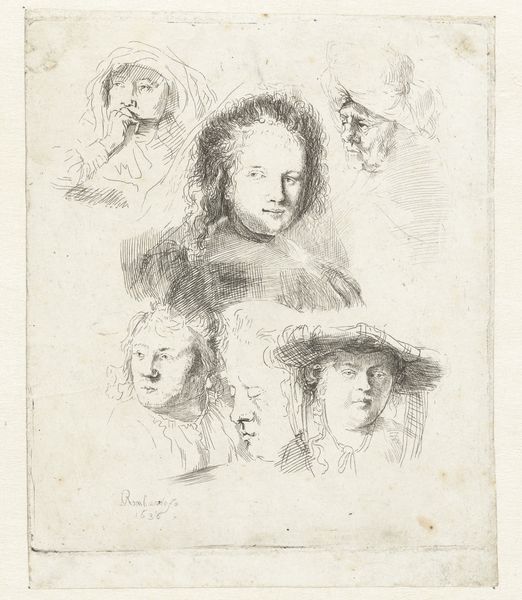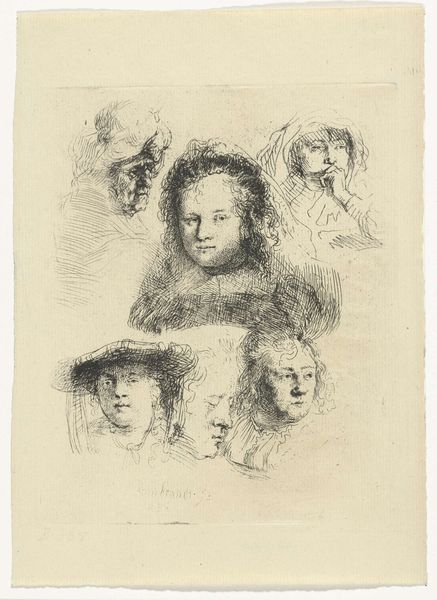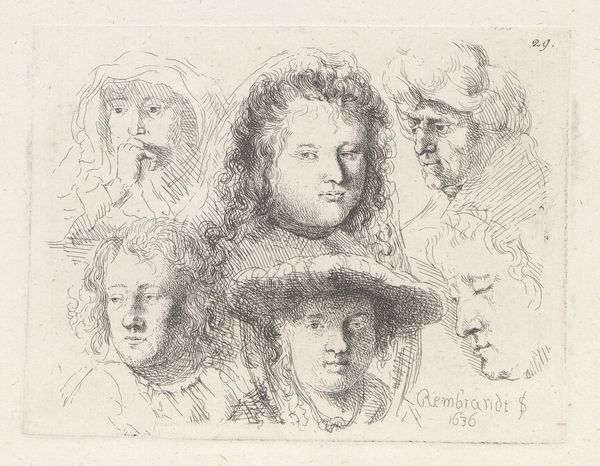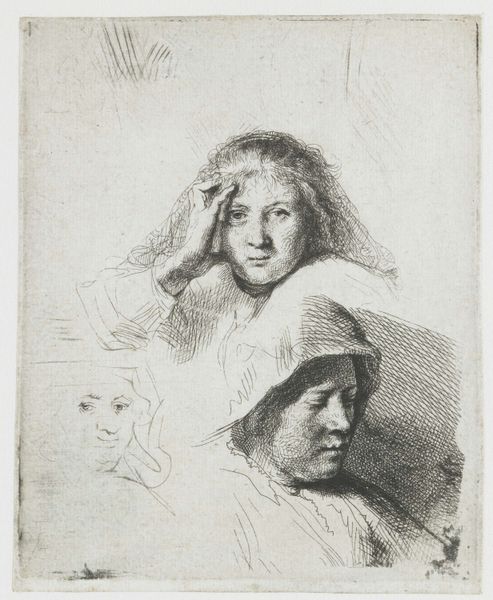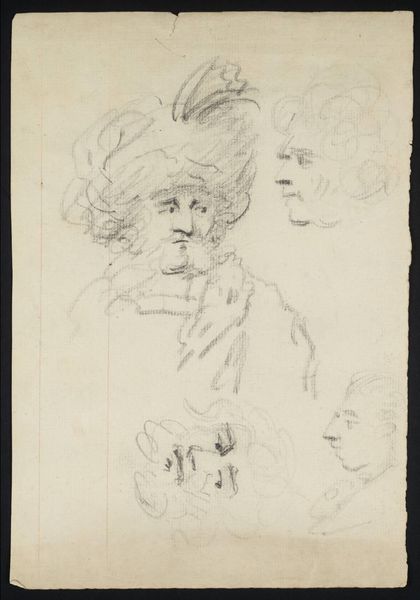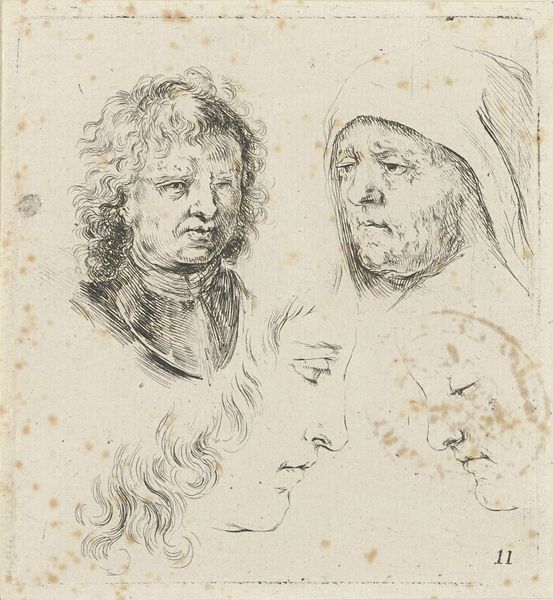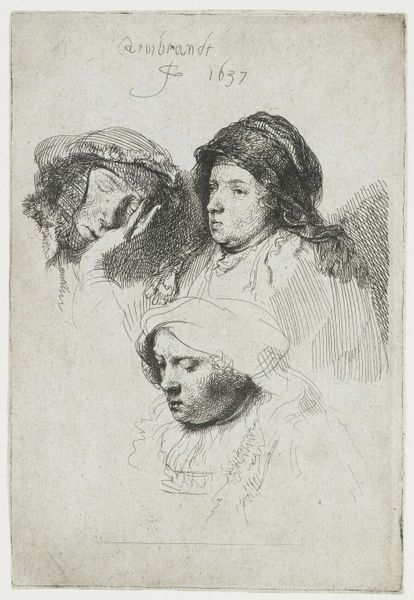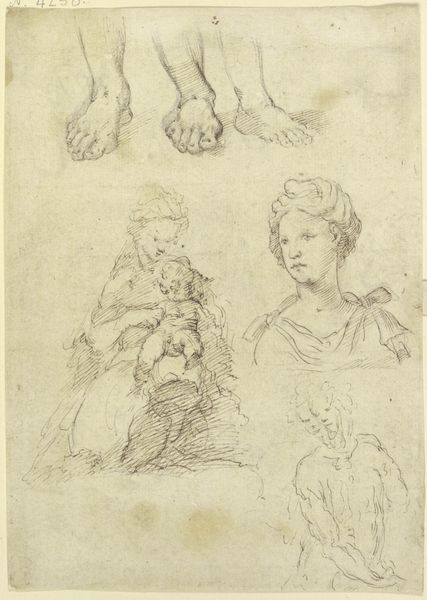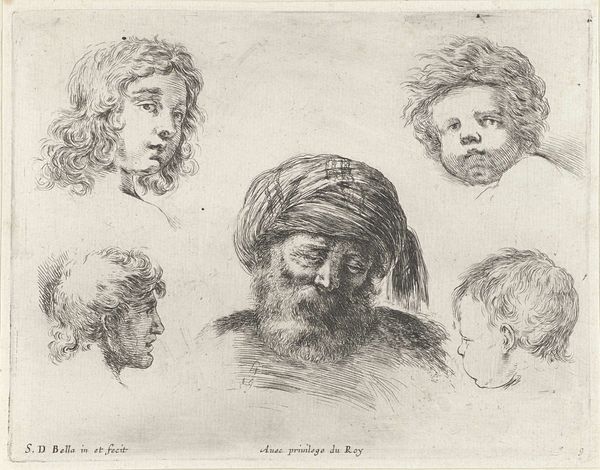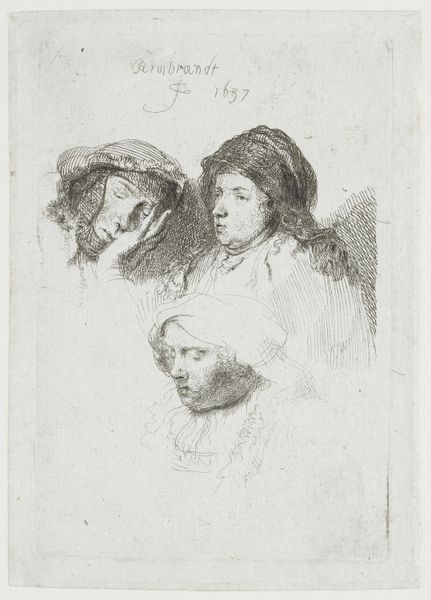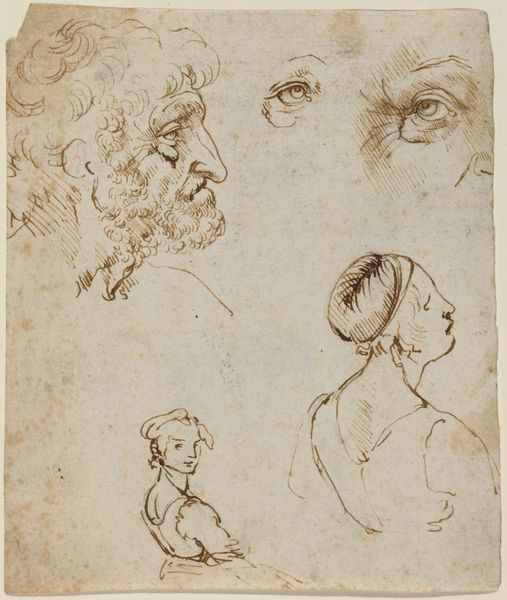
drawing, print, etching
#
portrait
#
drawing
#
baroque
#
head
#
dutch-golden-age
# print
#
etching
#
men
#
portrait drawing
Copyright: Public Domain
This print of head studies was made by Rembrandt van Rijn in 1636, using etching. This process involves drawing with a needle on a metal plate covered with wax, which is then bathed in acid. The acid bites into the exposed lines, creating an image that can be inked and printed. Here, the artist captures the likeness of his wife, Saskia van Uylenburgh, alongside other figures. The etched lines vary in thickness and density, creating a sense of depth, shadow, and the play of light on the faces. This technique is perfectly suited to Rembrandt’s interest in capturing fleeting expressions, and the character of the sitters. Compared to painting, etching was relatively inexpensive and facilitated the wider distribution of images. Prints could be sold to a broader market, allowing artists to reach audiences beyond wealthy patrons. This made etching a vital medium for disseminating ideas and images in a rapidly changing society. So, we see how the very nature of the printmaking process – its reproducibility and relative affordability – democratized art-making to some degree.
Comments
rijksmuseum about 2 years ago
⋮
In 1634 Rembrandt married Saskia Uylenburgh, the daughter of a mayor of Leeuwarden. Almost all of the heads in these studies are of her. Rembrandt evidently thoroughly enjoyed portraying his new bride in ever-different poses. The fluid lines suggest that he drew directly on the etching ground, at times without his models being aware of it.
Join the conversation
Join millions of artists and users on Artera today and experience the ultimate creative platform.
